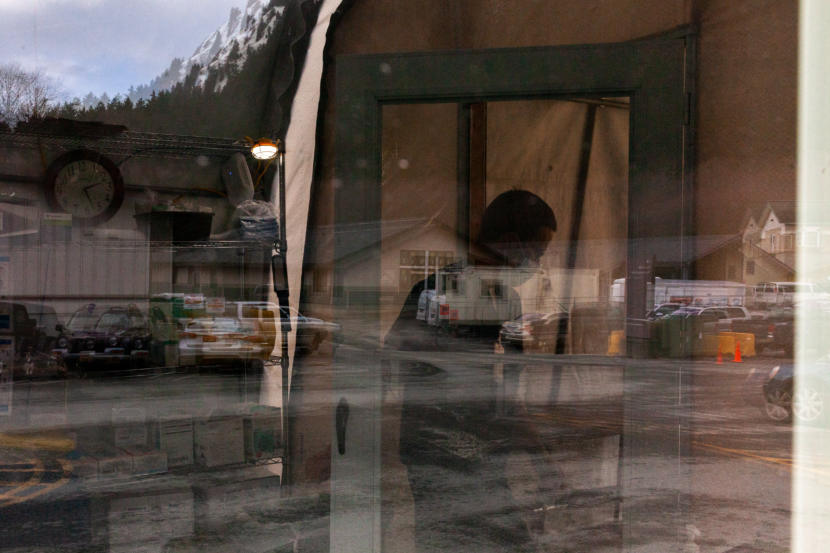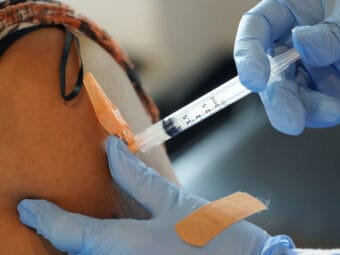
How public health systems collect and report data during a pandemic can help determine how diseases spread and how to stop them. But a New York Times investigation shows that data in Alaska — and across the nation — continues to be lost or unusable due to under-investment in public health.
Reporter Sharon LaFraniere traveled to Alaska for the story. She says Alaska’s data shortfalls during the pandemic weren’t unusual — and the only solution is spending money to modernize public health systems.
Listen:
The following interview has been edited for length and clarity.
Claire Stremple: What’s the data failure? How did it happen?
Sharon LaFraniere: The government never invested enough money to modernize the data systems for state and local governments. Over the past decade, we spent $38 billion to modernize health records at hospitals and clinician’s offices. And we’re seeing results from that now, like if you go into your doctor’s office, and many places, the doctor can right there, you know, look up your electronic record. But we didn’t spend the same. We didn’t spend money to modernize the state and local health departments. We left them with the spreadsheets, telephones, fax machines, Excel sheets. The old system. I think many people don’t understand–and I certainly didn’t understand, until I got into this–how behind state and local health departments are in the data. They’re way behind.
Claire Stremple: You wrote that the low vaccine rate contributed to the heavy death toll in the United States from COVID-19. But so did the lack of data. Why is that deadly?
Sharon LaFraniere: Nobody can pinpoint we lost XX million, or how many other people became severely ill from COVID, because we didn’t have data. But basically what happened is the fact that the data pipeline, if you think of the digital pipeline, is totally riddled with holes and obstacles, and it doesn’t flow. It means that the government did not respond as quickly as it could have. Because to some degree, they were flying a little bit blind. All the senior federal health officials that I’ve spoken to in the last three years are utterly convinced it had a real impact.
Claire Stremple: What made you come to Alaska to tell this story?
Sharon LaFraniere: Two reasons. One, the Alaska State Health Department is a pretty hard charging health department, and it has a lot of talented people in it.
Secondly, because its problems are quite typical.
Claire Stremple: What was the atmosphere like when you were here. What did you see? Did anything kind of stand out to you while you were reporting?
Sharon LaFraniere: I mean, I’m saying this not to be flattering, but I think the health department is incredibly hard working and very dedicated. I mean, why else would you be carrying stacks of paper, you know, from the fax machine at 6 a.m. and entering it all by hand if you didn’t really care?
Claire Stremple: You reported a lack of race and ethnicity data. How does that happen? And what are the consequences?
Sharon LaFraniere: So race and ethnicity is one of the data fields that is often just left out. And so for instance, in Alaska, the someone has a COVID test and they test positive, the lab test comes back in 6out of 10 cases where the field that says race and ethnicity is simply left blank. And so the health authorities don’t want to say, ‘hey, we’re not going to process these results, because you left this critical information blank.” They process the results. But then when Dr. Zink wanted to know about the disparate rate of COVID testing among minorities–she basically was trying to figure out where Alaska needed to put more testing sites to correct this–and she couldn’t get an answer because that field was left blank way too often. It matters when you’re trying to figure out how to allocate resources.
Claire Stremple: What are the consequences of using trained epidemiology staff to do a bunch of manual data entry? You know, what could they have been doing instead? And what did epi staff in Alaska have to say about this?
Sharon LaFraniere: To me was one of the more troubling things is that if you, I mean, think of it like if your phone didn’t sync with your computer, right? Then you enter your information in the phone, you’re going to enter it again in the computer. That’s what was happening here. So a whole bunch of people had to be roped in to re-enter information because the databases could not connect with each other. So the health department was forced to basically reduce some of its most highly trained epidemiologists, for periods of time, simply to enter data.Cecause the data had to be entered. So they would do it on weekends, they would do it at night. So it would start at 6am. It was an immense amount of effort, just to get the data entered. And that’s not unusual. And then a disturbing thing about it is people put in all that effort, and then a lot of it wasn’t useful. Because the date by the time the data got entered, it was too late to be meaningful, or it was too incomplete to guide decision making.
Claire Stremple: In your reporting did you or did anyone you spoke to have a sense of how we fix it?
Sharon LaFraniere: I mean, you fix it by money. Basically, if the system is upgraded, then there are faster ways to fill in the missing information, right? And it’s not just money, it’s not just that they need software and better systems and all that–they need the people to run the systems, right? They need data scientists and data analysts and people who are trained as an epidemiologist and as data scientists, and they don’t have those people, they have a completely skeletal staff.
Claire Stremple: To your point about money, Alaska got less funding than expected, much less funding than expected for improvements. What are the consequences of that? And why is it still not a priority?
Sharon LaFraniere: I’m not sure why Alaska didn’t get more money, like why its share of the pot was less. But I know that the pot is too small. And when you divvied up among fifty states, what Alaska ended up with from this latest grant, a five year grant was about $1.8 million a year for that for public health personnel and infrastructure. And of that there was $213,000 a year for data modernization. And, like one of the state health officials said, ‘Well, that’s about enough for a nice campervan.’ It’s partly that I think Congress allotted a certain amount of money, but it just isn’t enough money.



